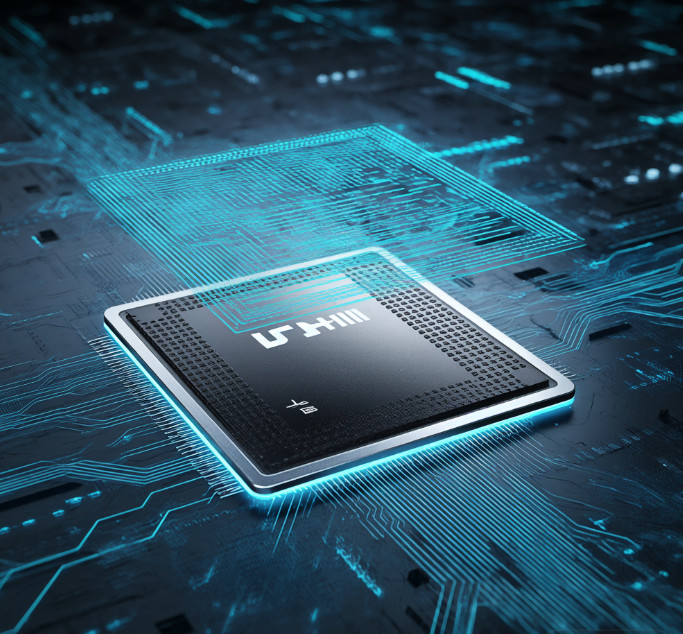
Recently, a research team from Cornell University in the United States launched the world's first "microwave brain" chip, which redefines the boundaries of low-power computing with a disruptive technological architecture. This microchip based on microwave physics principle not only realizes the synchronous processing of ultra fast data signals and wireless communication signals, but also opens up a new path for the Internet of Things, mobile terminals, edge computing and other fields with a power consumption of less than 200 milliwatts and a task accuracy rate of more than 88%.
The core innovation of chips lies in breaking through the paradigm of traditional digital circuits and instead utilizing the physical properties of microwave frequency bands to construct brain like neural networks. Traditional digital chips rely on the switching state of transistors for binary operations, while the "microwave brain" directly extracts data features in an analog manner by adjusting the amplitude, phase, and frequency of microwave signals. This design draws inspiration from the connection patterns of biological neurons and achieves pattern recognition and learning through an interconnected network constructed with tunable waveguides. Its processing speed can reach tens of gigahertz per second, far exceeding the electron transfer rate limit of most digital chips.
At the architecture level, the built-in electronic tuner and signal phase shifter of the chip constitute the key to dynamic task adaptation. By switching data channels in real-time, the chip can flexibly respond to different AI tasks without retraining, such as seamless switching in scenarios such as radio signal decoding, radar target tracking, and digital data processing. Experimental data shows that its accuracy in wireless signal classification tasks exceeds 88%, which is on par with traditional digital AI models that are larger in size and consume more power. However, its energy consumption is only one thousandth of the latter.
The low-power characteristics of chips make them an ideal choice for drone swarms, wearable devices, and individual systems. For example, in complex electromagnetic environments, it can monitor wireless traffic anomalies in real time, accurately track radar targets, and even resolve crowded radio channels, providing millisecond level response for battlefield situational awareness. The funding support from the Defense Advanced Research Projects Agency (DARPA) further confirms its strategic value in military communications and electronic warfare.
With the popularization of 5G/6G communication and intelligent sensing devices, power consumption and latency have become key bottlenecks restricting the implementation of technology. The localized AI computing capability of the "Microwave Brain" chip enables real-time data processing for devices such as smartwatches and mobile phones, without relying on cloud servers, greatly improving user privacy protection and response speed. For example, in health monitoring scenarios, chips can instantly analyze electrocardiogram signals, identify abnormal patterns, and trigger warnings, while consuming only one tenth of the power of traditional solutions.
In the industrial Internet, the chip can support real-time processing of high-frequency signals, such as analyzing the vibration frequency of equipment through microwave signals to predict mechanical faults; In the field of autonomous driving, it can collaborate with radar and camera data to achieve low latency target recognition and path planning. The similar technology developed by City University of Hong Kong has achieved an accuracy of 96.6% in image edge detection, verifying the universality of microwave physical paths in industrial scenarios.
Despite the revolutionary potential demonstrated by the "microwave brain" chip, its commercialization still faces multiple obstacles. Chips rely on special materials such as lithium niobate and micro nano processing technology, which currently has low yield and high cost, making it difficult to compete with the traditional 3nm/2nm process of silicon-based chips. Its simulation architecture excels in signal processing and pattern recognition, but has shortcomings in general logic operations and complex algorithm implementation, requiring collaboration with traditional digital chips. Traditional chips have a mature software ecosystem, while the "microwave brain" needs to rebuild its development framework and standardized interfaces, and there is an urgent need for interdisciplinary cooperation.
The research team is promoting the penetration of chips into the consumer electronics field by optimizing processes and integrated designs. For example, reducing chip size to the millimeter level and developing interface protocols compatible with existing digital systems. In the long run, the "microwave brain" may become a key node in optoelectronic fusion computing - its microwave frequency processing capability complements the ultra large bandwidth of photonic chips, jointly building a low latency, high-efficiency next-generation computing architecture.
Under the trend of deep integration of AI and communication technology, the "microwave brain" chip not only represents a breakthrough in a technological path, but also heralds the evolution of the computing paradigm towards a "physical+digital" hybrid mode. From national defense security to livelihood applications, this revolution driven by microwave physics is redefining the boundaries of 'intelligence'.

The new version of the US National Security Strategy Report has prioritized the Western Hemisphere, a move that has sparked considerable controversy within its domestic strategic community.
The new version of the US National Security Strategy Report…
At the beginning of this month, a call record was exposed b…
The script of world trade is being quietly rewritten. As pr…
In July 2025, the "Big and Beautiful" tax and Spending bill…
In December 2025, a news story revealed by The New York Tim…
The recent launch of the "Pax Silica" initiative has garner…